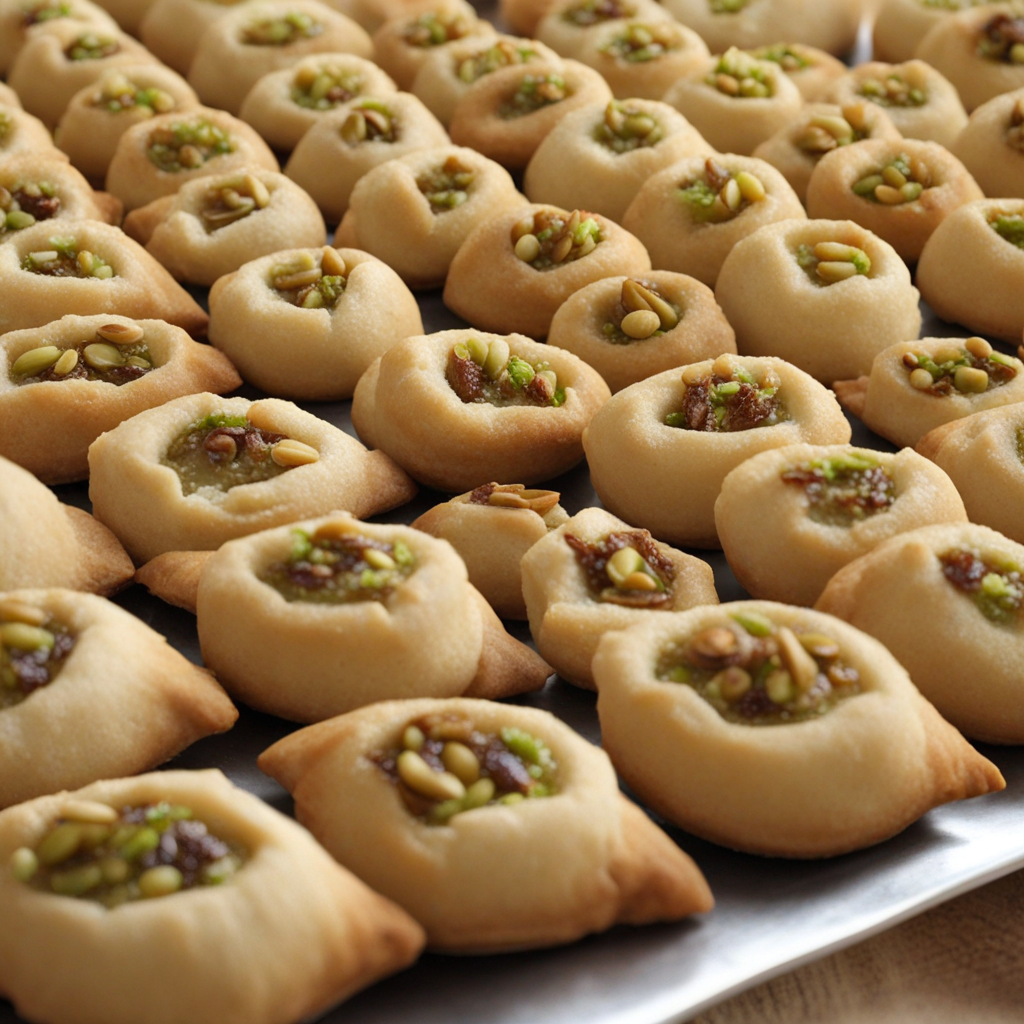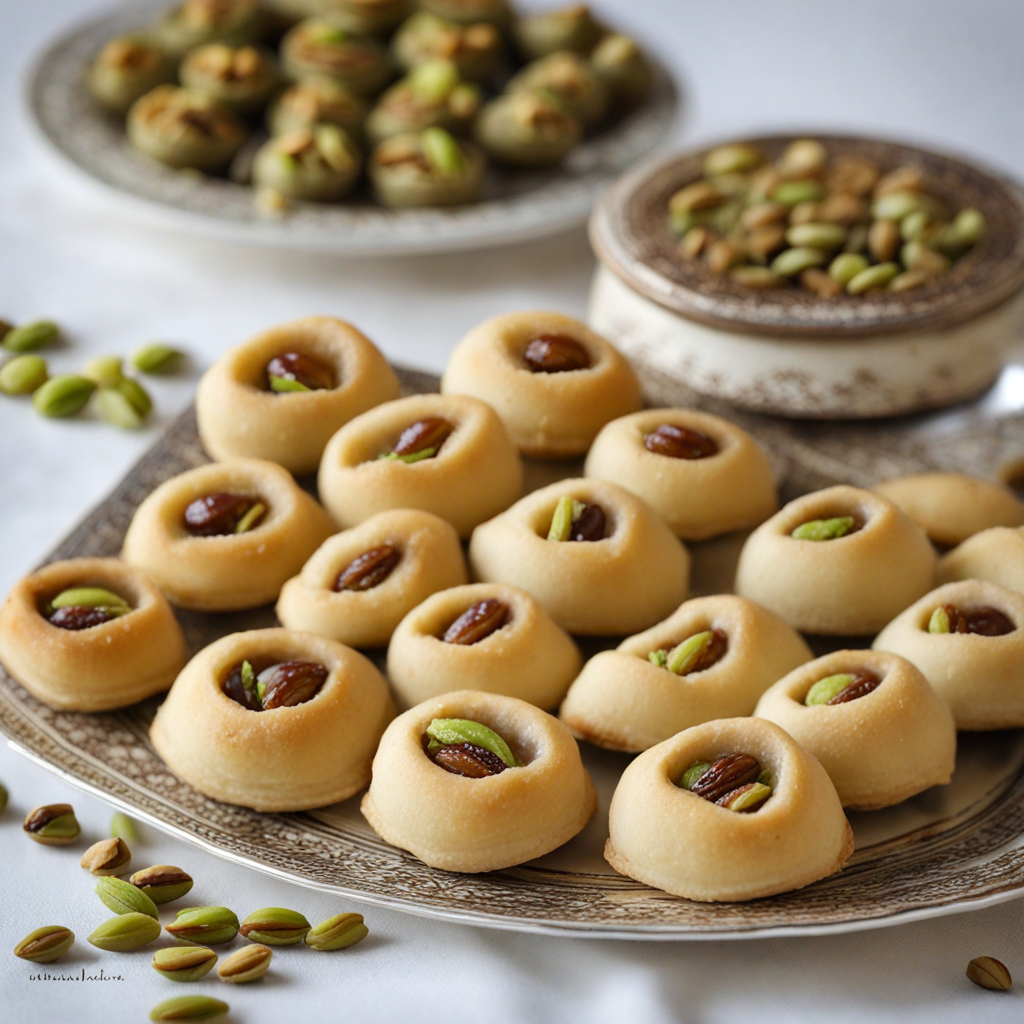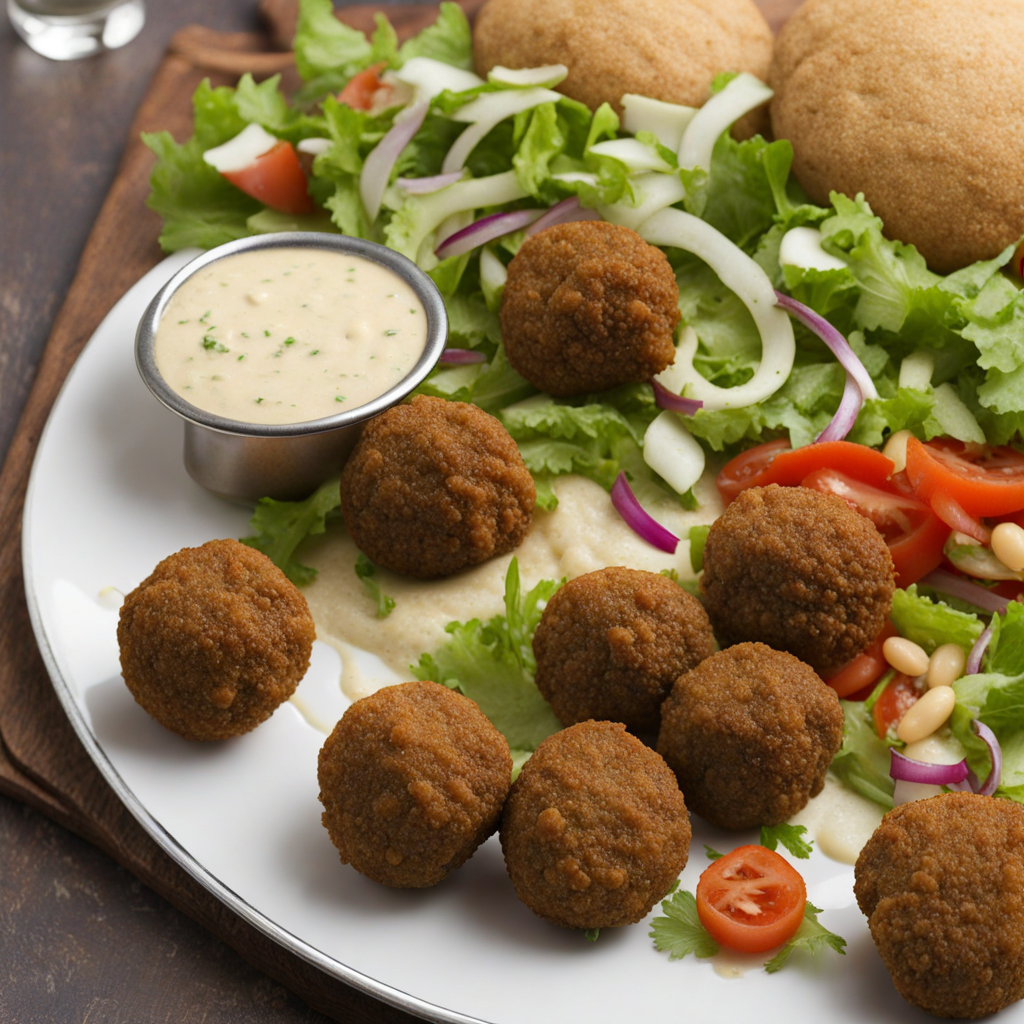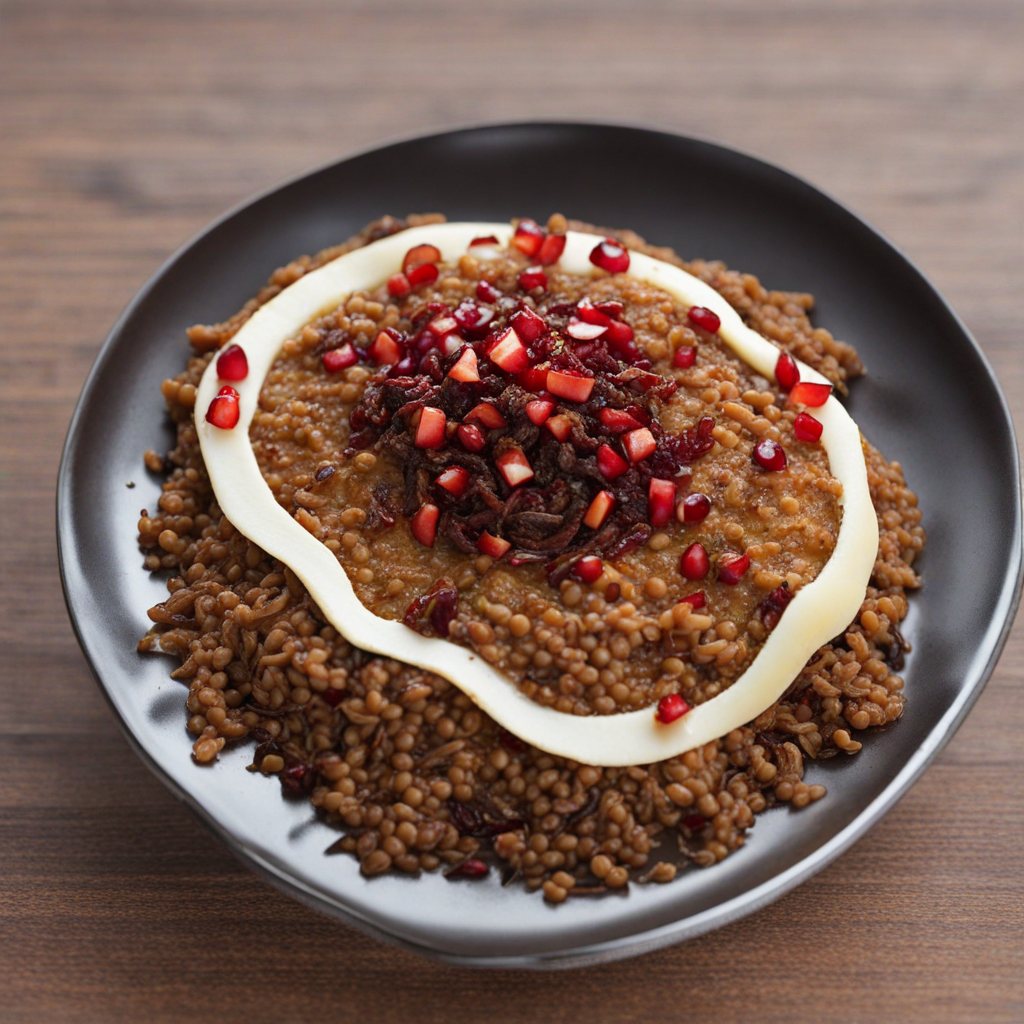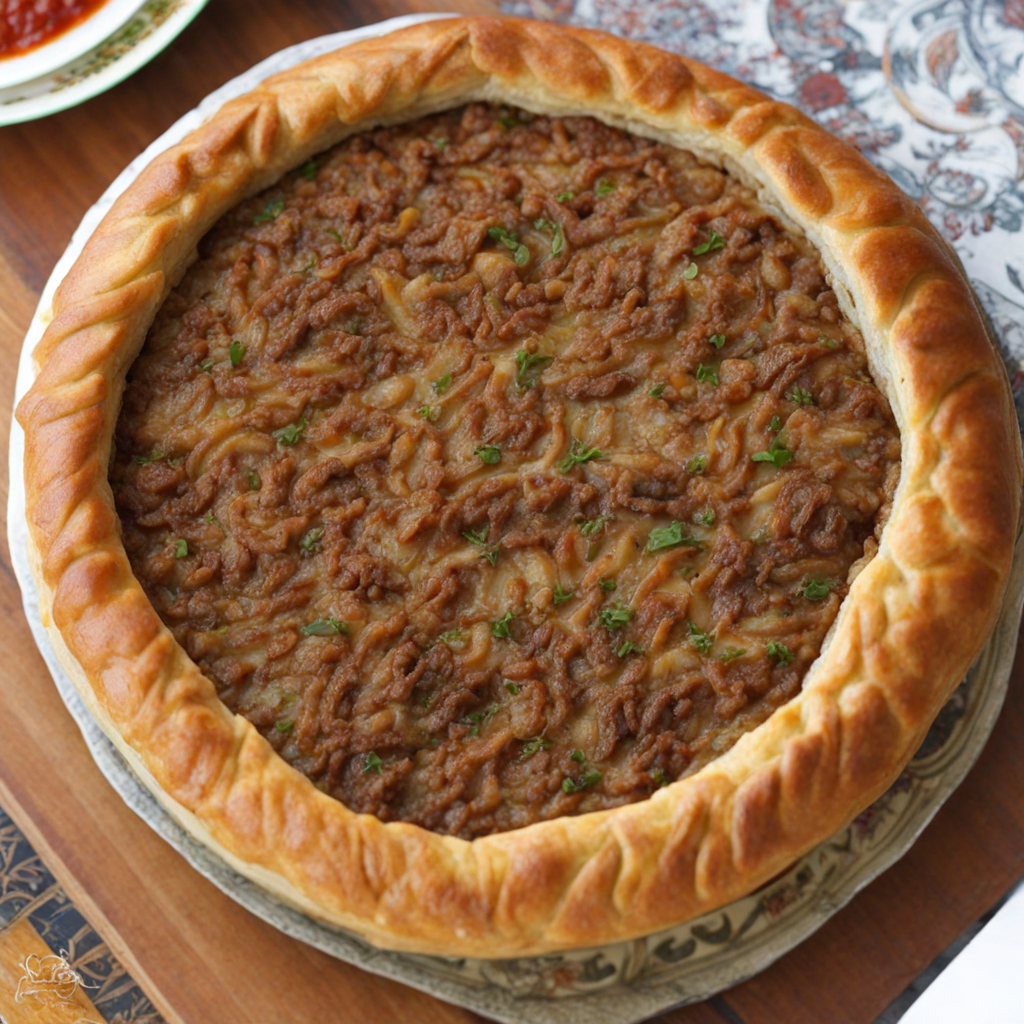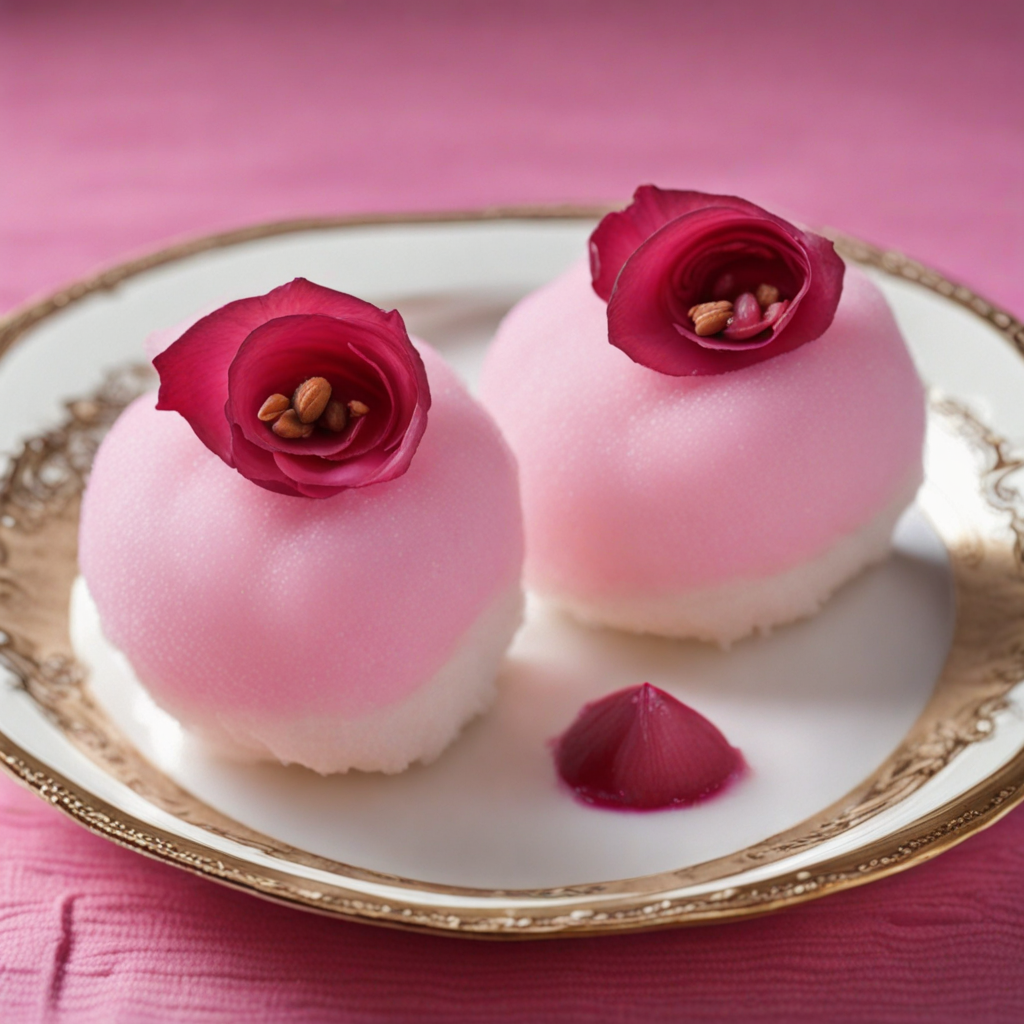Ma'amoul
Ma'amoul is a delightful Middle Eastern pastry that hails from Syria, known for its rich flavors and intricate textures. Typically made from a buttery, crumbly dough, this traditional treat is filled with a variety of ingredients, such as dates, nuts, or figs. The dough is crafted from semolina or flour, giving it a unique bite and a slightly sandy texture that melts in your mouth. Each bite reveals a sweet and fragrant filling that perfectly balances the subtlety of the dough, creating a harmonious blend of flavors that is both comforting and indulgent. What sets Ma'amoul apart is the artistry involved in its preparation. Often shaped into beautifully intricate designs using wooden molds, these pastries not only taste exquisite but are also a feast for the eyes. The molds, often adorned with traditional patterns, leave a stunning imprint on the exterior, making each piece not just a treat but a work of art. This attention to detail reflects the cultural significance of Ma'amoul, often served during festive occasions and family gatherings, symbolizing celebration and togetherness. When you take a bite of Ma'amoul, you're not just enjoying a snack; you're experiencing a slice of Syrian heritage. The combination of the nutty filling, often enhanced with spices like cinnamon or cardamom, adds depth to the flavor profile, while the slightly crispy exterior provides a satisfying contrast. Whether enjoyed with a cup of Arabic coffee or on its own, Ma'amoul offers a unique and delightful taste that invites you to explore the rich culinary traditions of Syria.
How It Became This Dish
The History of معمول: A Sweet Journey Through Time In the heart of the Middle East, where the rich tapestry of history and culture intertwines, lies a delectable tradition that has stood the test of time: معمول. This sweet pastry, filled with dates, nuts, or figs, is not just a treat for the palate; it is a symbol of celebration, hospitality, and the enduring spirit of Syrian culture. Origins The origins of معمول can be traced back to ancient times, as the Middle East has long been a melting pot of cultures and culinary practices. The earliest references to sweet pastries can be found in ancient Egyptian texts, where honey and nuts were combined to create confections enjoyed during festivals. However, the specific form of معمول as we know it today began to take shape in the Levant region, particularly in Syria, over a millennium ago. The word "معمول" itself is derived from the Arabic root "ع م ل," which means "to make" or "to do," reflecting the labor of love that goes into creating these pastries. Traditionally made during festive occasions such as Eid al-Fitr, Easter, and weddings, معمول has become synonymous with celebration and community bonding. Cultural Significance In Syrian culture, food is more than sustenance; it is an expression of identity and an integral part of social gatherings. The preparation and sharing of معمول is a cherished ritual, often involving family members coming together to create these intricate pastries. The experience is as important as the final product, fostering a sense of unity and continuity among generations. The filling of معمول varies by region and occasion, showcasing local ingredients and family traditions. The most common fillings include dates, walnuts, and pistachios. Each filling carries its own symbolism; for instance, dates are often associated with prosperity and sweetness in life, while nuts signify strength and vitality. The process of making معمول is meticulous, requiring special molds that imprint intricate designs on the dough, transforming each piece into a work of art. These designs often reflect cultural symbols, floral patterns, or geometric shapes, adding an aesthetic appeal to the already delicious treat. Moreover, معمول plays a crucial role during special occasions. During Ramadan, for instance, families prepare large batches to share with friends and neighbors, reinforcing community ties. The act of gifting معمول is a gesture of goodwill and hospitality, embodying the spirit of generosity that is central to Syrian culture. Development Over Time As time progressed, the recipe for معمول evolved, influenced by trade, migration, and intercultural exchanges. The Silk Road, which connected the East and West, played a significant role in the dissemination of culinary practices, including the art of pastry-making. The introduction of new ingredients, such as various spices, and techniques enriched the traditional recipes, leading to a diversity of flavors and styles. During the Ottoman Empire, the influence of Turkish cuisine began to shape the way معمول was prepared and enjoyed. The use of flour, sugar, and butter became more prevalent, creating a richer dough that enhanced the overall flavor. The introduction of new fillings, such as almond paste and rose water, added a luxurious twist to the traditional recipes, making معمول a sought-after delicacy among the upper classes. The 20th century brought about significant changes in Syrian society, including the effects of political upheavals and migrations. Despite these challenges, the tradition of making معمول persisted, often serving as a reminder of home and heritage for many Syrian expatriates. In diaspora communities around the world, especially in countries like the United States, Australia, and Canada, the preparation of معمول has become a way for Syrian families to maintain their cultural identity and share their culinary heritage with new generations. Modern-Day Practices In contemporary Syria, the art of making معمول continues to thrive, although it has adapted to the changing landscape of society. The civil war that began in 2011 disrupted many traditional practices, yet the resilience of the Syrian people has ensured that the spirit of community and celebration endures. Many families still gather to prepare these pastries, often using mobile phones to share recipes and techniques across borders. The rise of social media has also played a pivotal role in reviving interest in traditional foods like معمول. Home cooks and professional chefs alike are sharing their recipes and techniques online, creating virtual communities focused on Syrian cuisine. This digital renaissance has allowed for a global appreciation of معمول, with variations emerging that reflect the diverse culinary landscapes of its makers. Conclusion The story of معمول is a testament to the power of food as a unifying force in human experience. From its ancient origins to its modern-day iterations, this beloved pastry encapsulates the richness of Syrian culture, embodying traditions, values, and the enduring connections between people. As families continue to gather around the table, rolling dough and filling pastries, they are not just making a sweet treat; they are weaving a narrative of resilience, community, and celebration that transcends borders and generations. In a world that often feels fragmented, the act of making and sharing معمول serves as a reminder of the bonds that tie us together, celebrating the sweetness of life and the flavors of tradition. Whether enjoyed during a festive gathering or shared among friends, معمول remains a cherished symbol of Syrian hospitality, a delicious piece of history that continues to evolve while honoring its roots.
You may like
Discover local flavors from Syria


